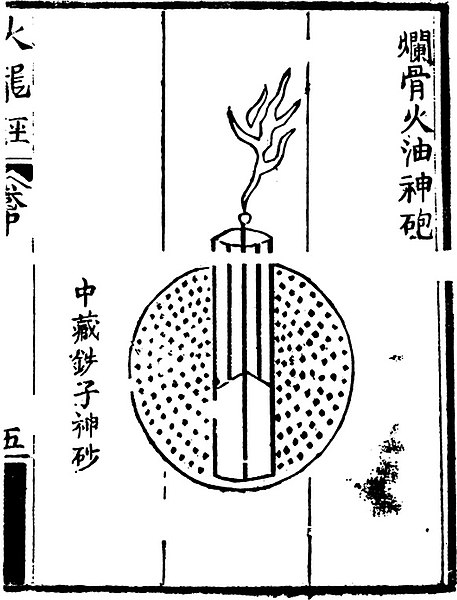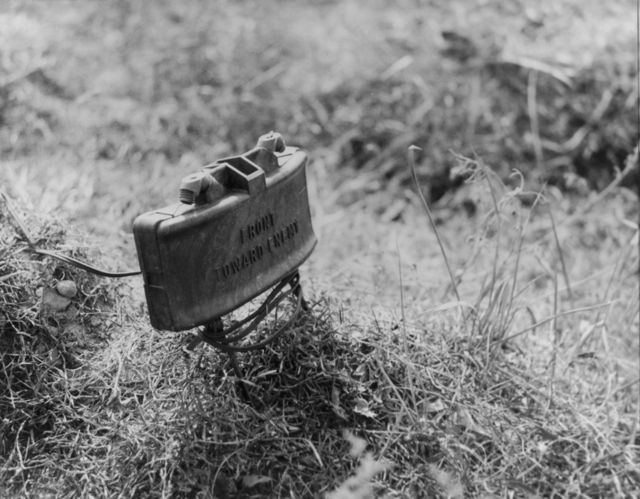Fragmentation (weaponry)
Videos
Page
Fragmentation is the process by which the casing, shot, or other components of an anti-personnel weapon, bomb, barrel bomb, land mine, IED, artillery, mortar, tank gun, or autocannon shell, rocket, missile, grenade, etc. are dispersed and/or shattered by the detonation of the explosive filler.

Grooved body of a Second World War-era U.S. Mk 2 grenade. The grooves covering the exterior of the grenade are used to aid in the gripping of the grenade when throwing.

An illustration of a fragmentation bomb from the 14th century Ming Dynasty text Huolongjing. The black dots represent iron pellets.

Artillery shell fragment from the Gulf War
Anti-personnel weapon
Videos
Page
An anti-personnel weapon is a weapon primarily used to maim or kill infantry and other personnel not behind armor, as opposed to attacking structures or vehicles, or hunting game. The development of defensive fortification and combat vehicles gave rise to weapons designed specifically to attack them, and thus a need to distinguish between those systems and ones intended to attack people. For instance, an anti-personnel landmine will explode into small and sharp splinters that tear flesh but have little effect on metal surfaces, while anti-tank mines have considerably different design, using much more explosive power to effect damage to armored fighting vehicles, or use explosively formed penetrators to punch through armor plating.

When the US M18 Claymore Anti-Personnel-Mine is detonated, it sends out 700 metal balls traveling at high velocity. These balls can kill or seriously injure any people in the 100-meter blast radius.